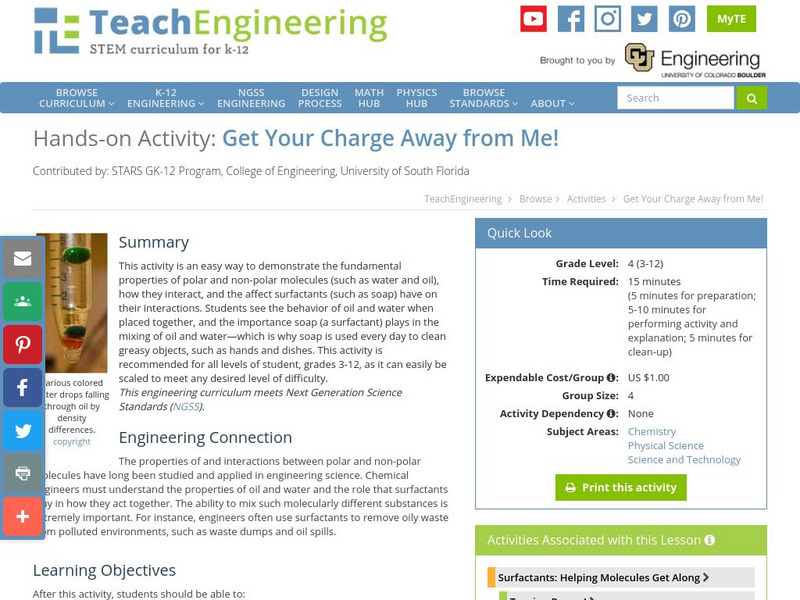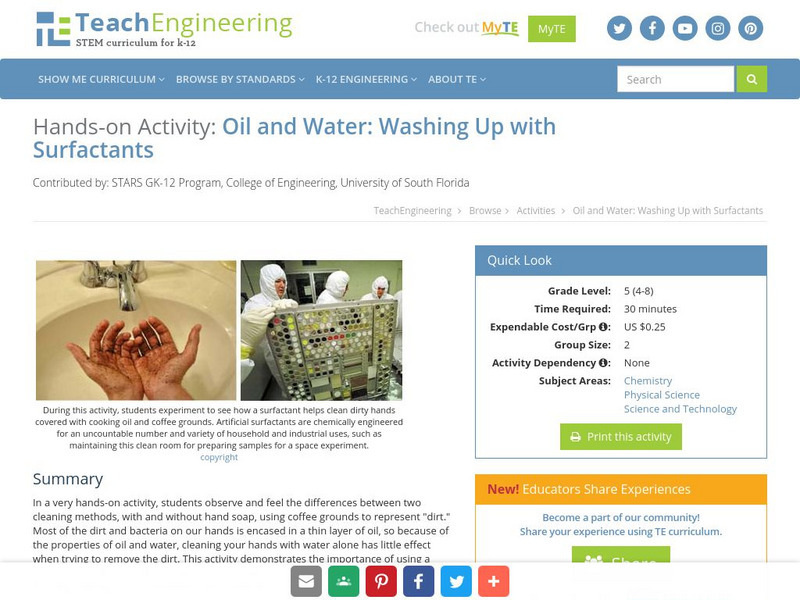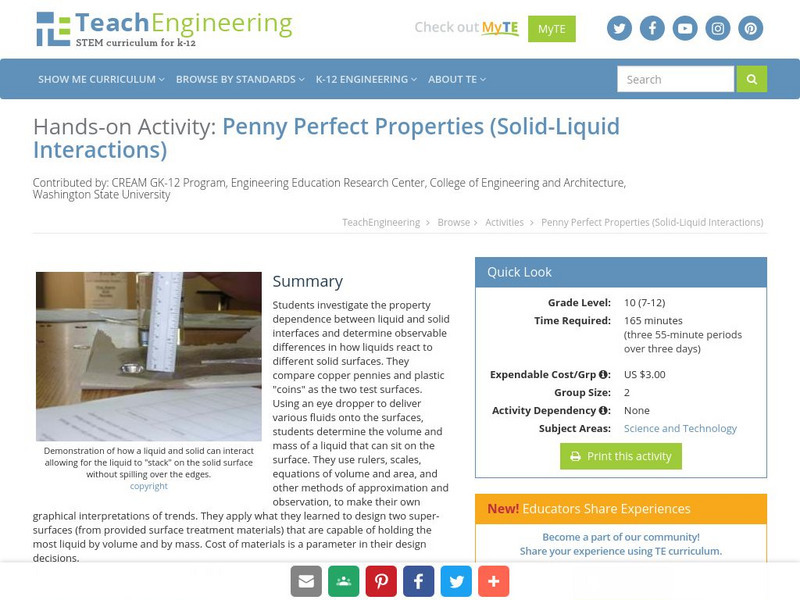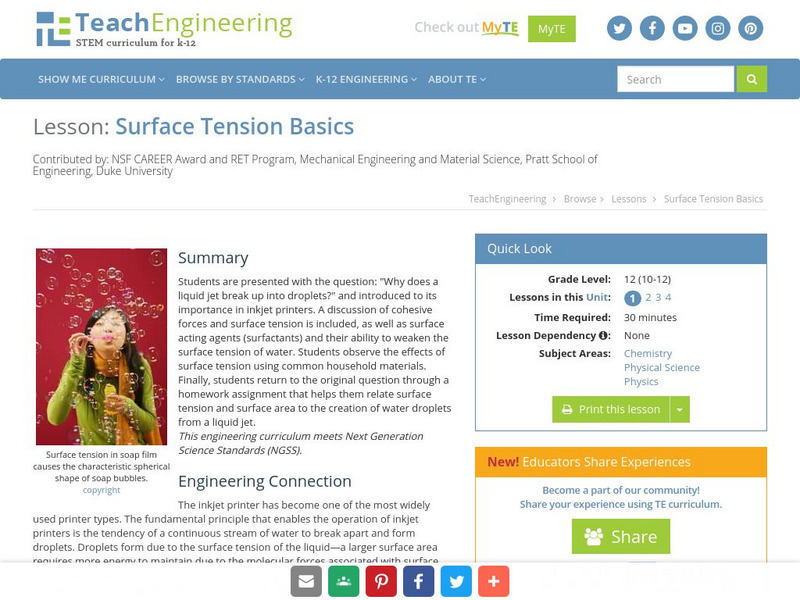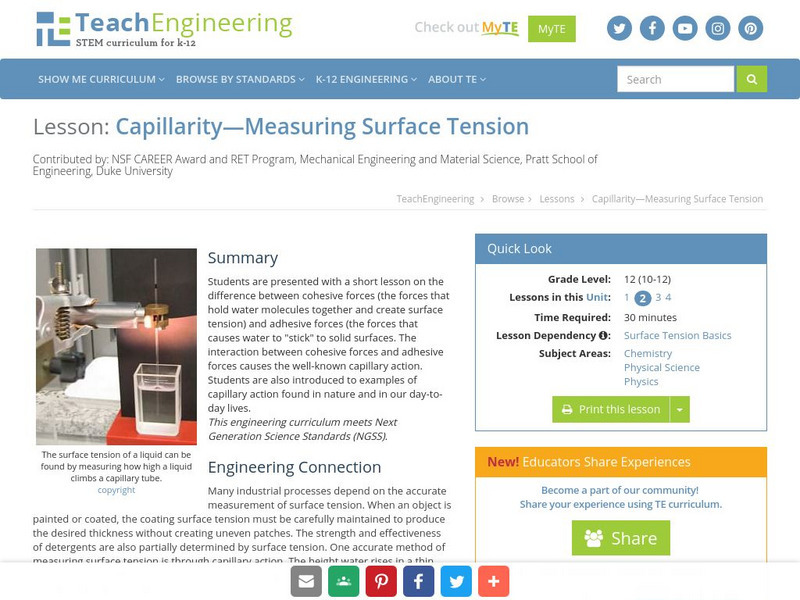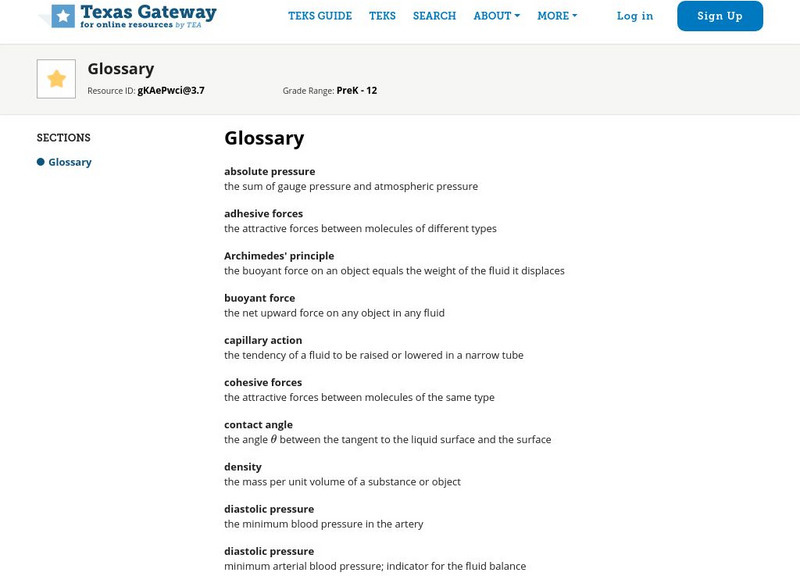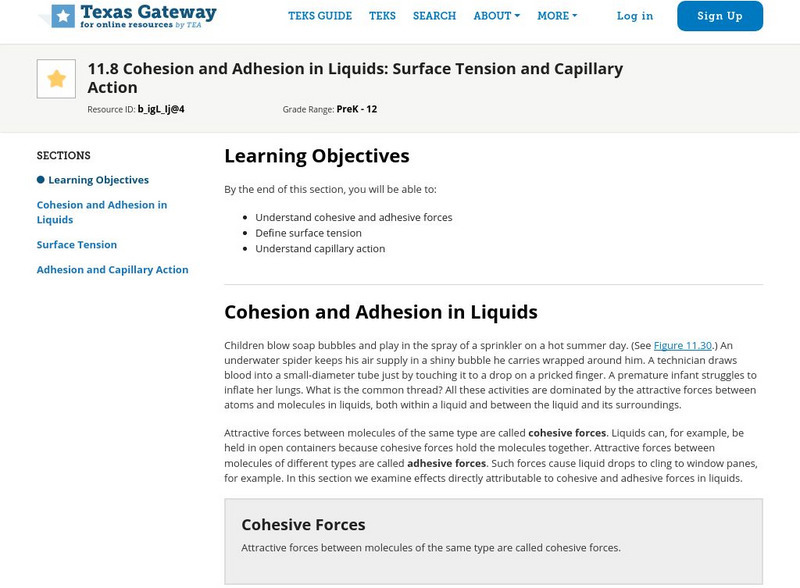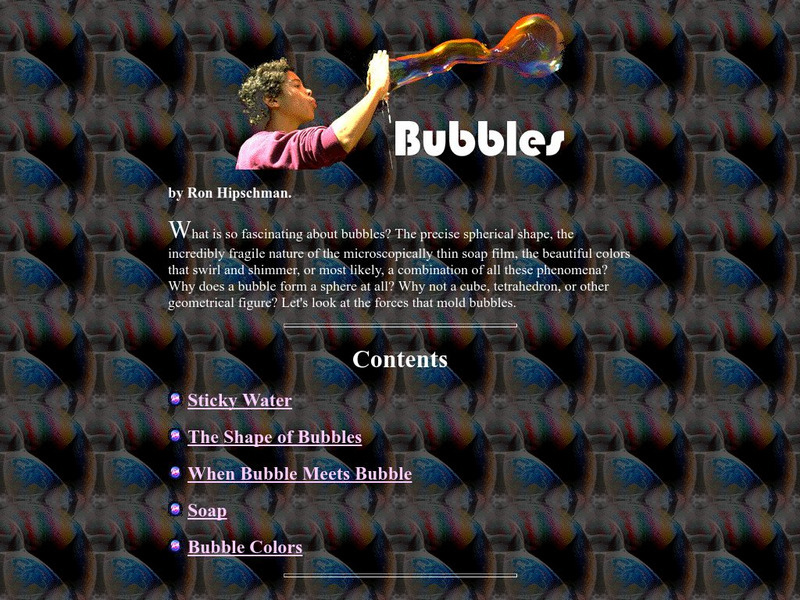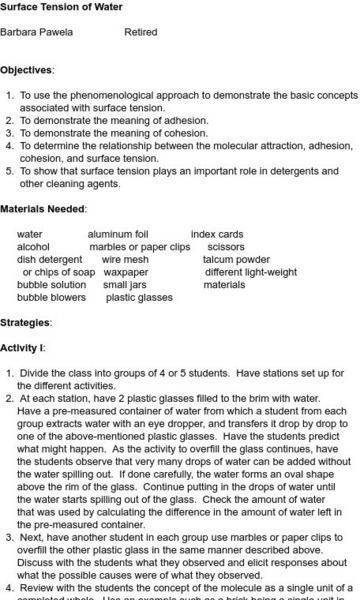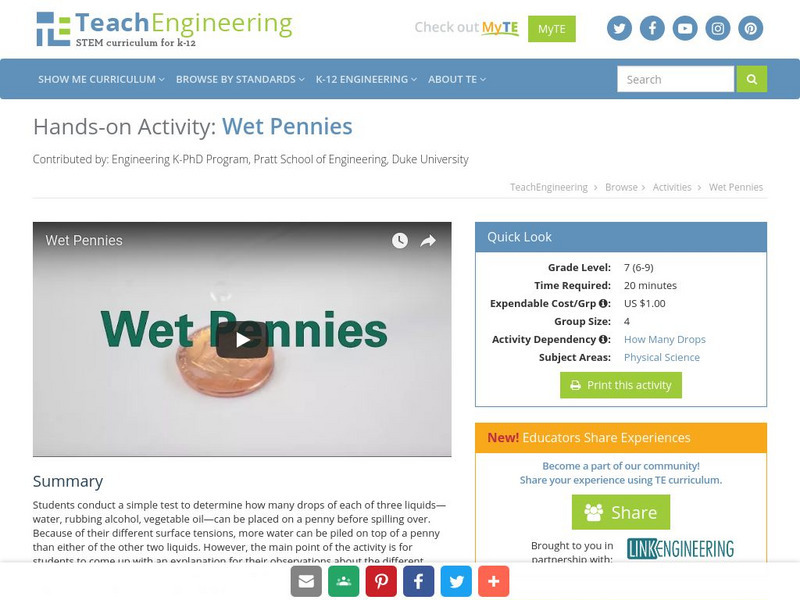TeachEngineering
Teach Engineering: Magic Magnetic Fluid
Students are introduced to a unique fluid--ferrofluids--the shape of which can be influenced by magnetic fields. This activity supplements traditional magnetism activities and offers comparisons between large-scale materials and...
TeachEngineering
Teach Engineering: Tension Racers!
Students see how different levels of surface tension affect water's ability to move. Teams "race" water droplets down tracks made of different materials, making measurements, collecting data, making calculations, graphing results and...
TeachEngineering
Teach Engineering: Get Your Charge Away From Me!
This activity is an easy way to demonstrate the fundamental properties of polar and non-polar molecules (such as water and oil), how they interact, and the affect surfactants (such as soap) have on their interactions. Students see the...
TeachEngineering
Teach Engineering: Down With the Clip!
Students see how surface tension can enable light objects (paper clips, peppercorns) to float on an island of oil in water, and subsequently sink when the surface tension of the oil/water interface is reduced by the addition of a...
TeachEngineering
Teach Engineering: Let's Get Dirty
In a very hands-on activity, students observe and feel the differences between two cleaning methods, with and without hand soap, using coffee grounds to represent "dirt."Most of the dirt and bacteria on our hands is encased in a thin...
TeachEngineering
Teach Engineering: Penny Perfect Properties (Solid Liquid Interactions)
Students investigate the property dependence between liquid and solid interfaces and determine observable differences in how liquids react to different solid surfaces. They compare copper pennies and plastic "coins" as the two test...
TeachEngineering
Teach Engineering: Surface Tension
Surface tension accounts for many of the interesting properties we associate with water. By learning about surface tension and adhesive forces, students learn why liquid jets of water break into droplets rather than staying in a...
TeachEngineering
Teach Engineering: Surface Tension Basics
Students are presented with the question: "Why does a liquid jet break up into droplets?" and introduced to its importance in inkjet printers. A discussion of cohesive forces and surface tension is included, as well as surface acting...
TeachEngineering
Teach Engineering: Capillarity Measuring Surface Tension
Students are presented with a short lesson on the difference between cohesive forces (the forces that hold water molecules together and create surface tension) and adhesive forces (the forces that causes water to "stick" to solid...
National Institute of Standards and Technology (NIST)
Thermophysical Properties of Fluid Systems
At this site, the student can find out thermophysical properties of different fluids and gases.
Texas Education Agency
Texas Gateway: Fluid Statics: Glossary
This is a glossary of terms and definitions used in Chapter 11: Fluid Statics from the AP Physics online text.
Texas Education Agency
Texas Gateway: Cohesion & Adhesion in Liquids: Surface Tension, Capillary Action
By the end of this section, you will be able to understand cohesive and adhesive forces, define surface tension, and understand capillary action.
American Chemical Society
Middle School Chemistry: Lesson Plans: Surface Tension
Young scholars observe and investigate why water has a strong surface tension.
Biology Corner
The Biology Corner How Is the Surface Tension of Water Affected by Soap?
Here is a classic lesson regarding surface tension. This learning exercise combines properties of water and the scientific method together for a hands on investigation.
Exploratorium
Exploratorium: Soap Bubbles
A scientific look at soap bubbles. Find out what it is about soap and water that allows bubbles to occur, how bubbles stick to each other, and why they are always a sphere. There are even formulae for making your own bubble solution.
Wolfram Research
Wolfram Science World: Surface Tension
The concept of surface tension is explained and the formula used to calculate it is presented. Includes an example of using the equation, and a table of surfaces tensions is given.
Science and Mathematics Initiative for Learning Enhancement (SMILE)
Smile: Surface Tension
This is a laboratory exercise which demonstrates the surface tension of water.
Science Education Resource Center at Carleton College
Serc: Floating Metal Pins Discrepant Event/guided Inquiry on Surface Tension
Through a combination of an interactive demonstration and guided inquiry, learners learn the basic nature of surface tension in liquids.
Science Education Resource Center at Carleton College
Serc: Walking on Water How Do Water Striders Do It?
This activity is designed for students to get a first look at water tension. It also allows them to make a model and test a situation seen in nature with materials that are readily available.
Middle School Science
Middle School Science: "Sinkin' Lincoln" Lab (Lesson Plan)
In this lesson plan site, students will "Define surface tension, determine what factors affect surface tension, and collect data on how many drops of water a penny can hold."
CK-12 Foundation
Ck 12: Properties of Water
[Free Registration/Login may be required to access all resource tools.] Students look at the chemical structure of water and learn how it determines water's properties.
American Chemical Society
Middle School Chemistry: Surface Tension
Explore the chemical properties involved in surface tension.
TeachEngineering
Teach Engineering: Wet Pennies
Students conduct a simple test to determine how many drops of each of three liquids can be placed on a penny before spilling over. The three liquids are water, rubbing alcohol, and vegetable oil; because of their different surface...
CK-12 Foundation
Ck 12: Chemistry: Physical Properties of Water
[Free Registration/Login may be required to access all resource tools.] Covers physical properties of water, hydrogen bonding, surface tension, and vapor pressure.




